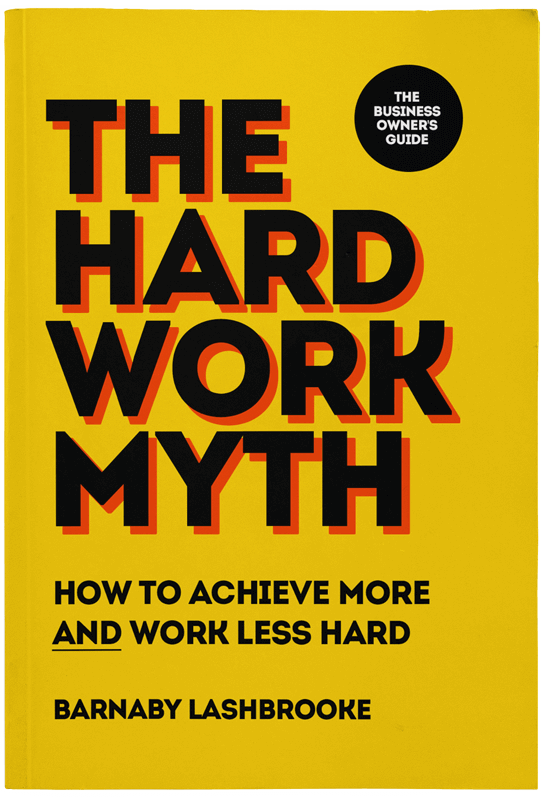Entrepreneurship can be rewarding, but it comes with its fair share of challenges. Behind stories of successful entrepreneurs, the sacrifices they have made often appear as side notes or are framed as inspiration, as examples of endurance. However, this framing and the stigma around conversations on mental health makes many entrepreneurs feel like they shouldn’t talk about how the pressure affects them.
The fact is, setting up a new business is risky. About 21% of new companies fail or don’t make it past the first year. If they do, it may take several months for the business to take off and start seeing a profit. In the meantime, financial difficulties and long work hours may affect relationships with family and friends, as well as the health of business owners.
Still, in recent years, more and more entrepreneurs are opening up about their struggles. Among them is Foundry Group managing director, Brad Feld. He started blogging in 2013 about his episodes of depression.
Soon, he started getting emails from hundreds of business owners with similar issues. Many of them were successful people, well-known, but they felt they couldn’t open up about their feelings of shame and weakness.
But besides the high risk of failure, why is entrepreneurship so stressful?
Entrepreneurs wear many hats
Even with employees, usually companies start small. Founders often have to perform many tasks, even some they are not trained to do, which leads to frustration and burnout.
Poor self-care
Entrepreneur culture encourages self-neglect by romanticizing working long hours, neglecting social support networks like family and friends, poor nutrition, lack of exercise, and relaxation.
Personality traits
Many entrepreneurs possess character traits that make them more susceptible to mood swings. Creative, driven, highly energetic individuals “are both more likely to be entrepreneurial and more likely to have strong emotional states,” says Michael Freeman, a psychiatrist, and researcher of mental health and entrepreneurship.
In turn, this may lead to depression, anxiety, burnout, decreased motivation, and, in severe cases, suicidal ideation. Many are prone to obsession, which can quickly turn to a darker side without getting proper rest and social support.
How does time management help?
Time management skills are among the most important soft skills you can learn. Here’s how they will help you take back control and enjoy the process of leading a business.
Stay on top of tasks
When we don’t manage our time efficiently, deadlines pile up, and projects get delayed. To keep projects sailing smoothly, basic time management skills are a must.
Prevent overwhelm
Not prioritizing tasks leads to tasks piling up, which results in stress and frustration. While many people claim the pressure of doing things at the last minute helps them, rushing makes it more likely to overlook errors and miss important details which diminish the quality of the work.
Make time for what matters to you
When you plan your schedule, you can also make time for family, friends, hobbies, and relaxation. Also, sticking to a schedule makes it less likely you’ll have to work overtime. There’s no need to take unfinished work home or to go to the office on the weekends if you manage your time well.
Better decision-making
It’s lunchtime, you’re hungry and in a hurry. Do you go for healthy options or for a rewarding but less healthy fast food option?
Making rushed decisions means making emotional choices, which are not always in your best interest. Having more time to consider other options, or deciding when you’re calm, is the best way to make tough decisions.
Avoid Parkinson’s Law
Parkinson’s Law states that “work expands so as to fill the time which is available for its completion”.
Time management skills like prioritizing and scheduling help set time limits for your work. However, self-imposed deadlines don’t always work. So, time management helps find solutions for those tasks we often put off.
A related concept is the perceived control of time, or the perception of having enough time to complete one’s work and meet deadlines, keep up with schedules, and even procrastinate a little.
Studies suggest improved perceived control of time may be a factor in job satisfaction and well-being.
Learning better time management behaviors like prioritization, time assessment, goal setting, planning, and monitoring activities helps improve your perceived control of time.
In other words, carrying out activities like goal setting, task prioritizing and scheduling, and progress monitoring helps improve your sense that you have enough time to achieve these tasks. In turn, you feel better about your work and experience more positive feelings like accomplishment and mastery.
Tip #1: Create a schedule and stick to it
Scheduling is planning your tasks within your available time to achieve your goals. Planning requires prioritizing your tasks, and time management frameworks are some of the best tools to determine your priorities.
Another way to prioritize activities is by breaking down your goals into tasks. Ask yourself, “what do I need to do to achieve my goal?” Be as specific as you can. Go atomic, if you can.
Once you know all the steps to achieve your goal, you can figure out what you need to delegate (more on that later) or automate, what you need to do yourself, and any assets you’ll need to accomplish each task.
The good thing is, you don’t need a fancy planner or complicated software. In fact, sometimes less is more. Pen and paper are all you might need.
So, how do you schedule effectively? Here’s how to get started.
Establish your availability
Start with identifying your work hours. Know how much you’ll work each day.
While you want to keep it sensible, keep it flexible enough to allow for extra hours when needed. For example, deadlines, business setup, and emergencies call for going beyond office hours. But do your best to go back to regular hours as soon as possible. Overworking yourself long-term is one sure way to burnout and decreased motivation and productivity.
Block non-negotiables
Which tasks are an absolute must in your everyday life?
It could be a meeting with a supplier or time slots for one-on-one sessions with your team. But it could also be personal items like lunch with the family or time for a run in the evenings.
Schedule urgent and important tasks
Check your to-do list and identify any important or urgent tasks.
This is a good time to ask yourself how you can make these tasks easier. For example, is there a way to automate some processes to reduce your workload? Or create templates to speed up your workflow?
Figuring out shortcuts can take a bit of time, so it’s important to experiment with possible solutions over time.
Plan for the unexpected
For example, avoid scheduling meetings and work sessions back to back. Allowing a bit of padding will make transitioning from one task to another easier, and it will reflect the time you spend on each task more accurately.
Also, this time can be a buffer for unexpected delays. That way, if an emergency happens, your entire schedule won’t be thrown off balance.
Schedule free time
This is the time for you to use as you see fit. You could use it to plan your days and weeks ahead, review systems and processes, or organize documentation.
Take one last look at your schedule
Do the work hours look reasonable? Is there time for you to rest, eat proper meals, and spend time with family? Are your priorities and urgent tasks being met?
It can feel like you’re trying to squeeze in too much. But remember, you don’t have to do it all in one day. The more realistic your schedule is, the easier it will be to follow it.
Tip #2: Learn to spot and avoid distractions
If you’re always asking yourself why you never seem to have enough time, maybe it’s time to look at what’s distracting you.
Distractions are often sneaky and can trigger procrastination.
There’s a lot of advice about how to avoid distractions and increase focus, but how do you notice when you’re getting distracted?
Some distractions are more noticeable than others. Scrolling down your social media feed is a very obvious interruption. Spending too much time on simple but still useful tasks like answering emails or tinkering with the formatting of a spreadsheet is far less noticeable.
Here’s how you can detect and stop them.
Time tracking
Time tracking is the best way to identify distractions and find patterns in how you use your time.
Do you spend longer than needed on your email early in the mornings? Are those 5-minute social media breaks really just 5 minutes long? Did you spend too much time searching for the perfect gif on Slack?
Small distractions like those add up over time.
Time tracking also helps you see which activities and projects are demanding more of your time and how it corresponds with the profit, either monetary or emotional, they bring back.
For example, let’s say you’re spending a lot of time cold calling, but you might be getting more business with online ads and referrals. Perhaps that’d be a good time to scale back on cold calling, reassess your strategy, or delegate the task to someone else.
Block external distractions
Once you know what is distracting you, the next step is to eliminate as many distractions as possible.
Having to resist distractions constantly wears you down over time, which affects your energy levels and even impairs your decision-making and performance.
A 1998 study suggests that willpower is a limited resource. Subjects were divided into two groups and presented with radishes and cookies. Each group was instructed to eat only one of the two and afterward were asked to complete a series of tasks. By the end of the study, those who were asked to eat radish showed more passivity, impaired performance, and gave up more easily while attempting to complete a hard task. This is called ego depletion. In other words, decision-making and self-control use the same resources, so these resources can get depleted if we’re constantly stopping ourselves from giving in to distractions.
One way to avoid ego depletion is by blocking external distractions.
If you spend a lot of time online, apps like ColdTurkey and Freedom allow you to block distracting websites and apps. You can schedule blocking times to just set them and forget them.
But distractions are not just online.
If you get distracted by other people, one way to find long periods of time to focus is by establishing some boundaries by letting coworkers or family know when you need some time to focus without interruptions.
Reduce internal distractions
It’s normal for the mind to wander, to get carried away by minor details. While you can block YouTube and ask your colleagues to give you a couple of hours for quiet work, some other distractions you just can’t block.
So how can you avoid these internal distractions?
Create a work routine
It helps you prime your mind for work.
To give your mind clarity, get pen and paper and write a checklist with the following items:
- Which task you’re going to work on. Make sure it’s a specific task and not a project. For example, it can be “Edit five photos for my ‘About’ page” instead of “Working on my website.”
- How long your work session is going to be. Ideally, you’ll want to keep your work sessions under an hour.
- What you need before you start. Make sure you have all the tools and documents you need. Check that you’ve blocked as many distractions as possible, that your environment is comfortable, that you have drinks or snacks if you’re feeling hungry or thirsty. The goal is to avoid interrupting your session to make coffee or turn on the A/C.
Once you have everything you need, set up a timer and get started.
At the end of your session, take a couple of minutes to write the results. Did you accomplish the task? Which distractions did you notice?
Keeping a record of this session can even help you over time, as you see patterns and discover which routines work best for you.
Tip #3: Delegate like your life depends on it
You don’t have to do everything yourself.
In fact, bringing in more people and delegating are crucial parts of growing a business.
If there’s one team member you want to include early on, when your budget is tighter, it’s a VA.
A virtual assistant can take care of everyday tasks that take time and are necessary to your operations but don’t immediately contribute to your growth.
From admin tasks like organizing documentation to scheduling appointments and replying to emails, working with a virtual assistant will free up a lot of time for you to concentrate on your business’ growth.
Virtual assistants offer more flexibility to adjust to your needs and budget. They’re ready to take on a broad range of tasks. In fact, many also train in areas like content creation and social media management, helping you offload a lot of miscellaneous tasks.
Also, you can hire VAs on hourly contracts, which means they can help with as much or as little as you need.
Lastly, an experienced virtual assistant can share a wealth of knowledge on how to organize your systems, giving you a head-start. But a VA is not the only help you can get for your business. From web designers to sales executives, putting together a team of people you can trust is an enormous step toward growth.
Tip #4: Fit your tasks to the right moment in your day
Another advantage of time tracking is that it shows you when you’re at your best performance and when you’re more prone to distractions and procrastination.
A big reason we procrastinate is simply low energy and fatigue. Toward the end of the day, it’s normal to feel less engaged with the work and more likely to make impulsive decisions. It’s why you may choose a healthy breakfast and lunch but go for fast food in the evening.
Fluctuations in energy and mood throughout the day are normal. Instead of aiming at performing at our peak all day long, it’s more realistic to learn when we’re feeling our best to schedule crucial tasks in those moments.
For Christopher M. Barnes, professor of management at the University of Washington’s Foster School of Business, circadian rhythms should be a crucial factor in determining work schedules to maximize performance without overstretching yourself. He proposes different circadian rhythms, or chronotypes, with different windows of high and low alertness.
For example, if you’re an early bird, you might find you’re at your most alert during the mornings, with your energy waning after lunch. So, leave tasks that require a lot of attention and creativity or crucial decision-making before lunch, when you’re at peak performance.
Tip #5 Keep your meetings short and virtual
In-person meetings seem to be more a thing of the past when you can just turn on your webcam to chat with someone.
So, make the most out of video calls to carry out meetings. Some meetings don’t even have to be in person. For example, the screen recording service Loom allows you to provide feedback or deliver training asynchronously.
Ideally, keep your meetings under 20 minutes. Why? Attention and energy decrease rapidly after the 30-minute mark. Also, scheduling short meetings helps keep the session focused and to the point.
To make the most out of the session, prepare an agenda with the topics to discuss, important questions, and leave a few minutes in the end to recap.
Time management is essential in business. When you don’t manage your time, time manages you. Feeling out of control and constantly reacting to situations takes a toll on your mental health, motivation, and relationships. To navigate the challenges of entrepreneurship without sacrificing your mental health, relationships, and job satisfaction, learn how to create a schedule effectively based on your priorities and your circadian rhythm, track your time, block out distractions, and allow time for family, friends, and relaxation.







